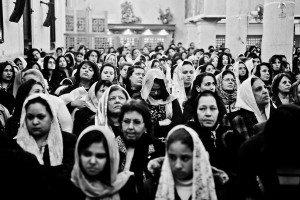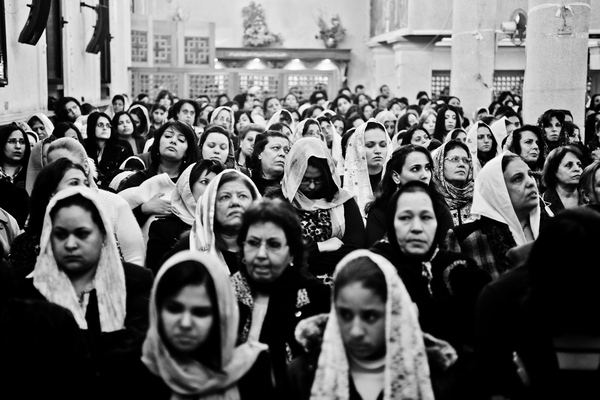
Laurence Underhill
Coptic Christian groups were furious on Monday after Abo Bakr El-Gendy, the president of CAPMAS (The Central Agency for Public Mobilisation &Statistics), appeared on the Tahrir Channel’s Al-Sha’b Yurid. They accused El-Gendy of drastically underrepresenting the number of Copts in Egypt.
Sherif Ramzy, founder of the group Copts Without Chains, told Saut El-Balad television that Gendy should be fired and put on trial. Fady Yousef, founder of the Copts Coalition of Egypt admitted to Daily News Egypt that he did not actually watch the show, but his group issued a statement attacking El-Gendy. Patriarch Anba Pachomius and Bishop Morcos of Shubra Al-Khaimah took to Shorouk newspaper to speak out.
However, this backlash all misses an important point. On the television broadcast, El-Gendy never gives a number for the current Egyptian Coptic population. Despite the continual badgering of the hostess, El-Gendy explains how they no longer collect census information on Egyptian citizen’s religious affiliation.
The CAPMAS office wanted to make sure that this story was rectified as soon as possible.
Ghada Moustafa, the chief of office for El-Gendy, explained that CAPMAS responded to international pressure and gave Egyptians the option of declining questions about religion in the census from 1986.
Doctor Cornelis Hulsman, one of the founders of The Centre for Intercultural Dialogue and Translation in Egypt, has been following this issue closely and adds there was also a domestic-political dimension to this change in method. “The former government of Mubarak simply didn’t want to argue with the church. The simplest way to deal with the issue politically was to avoid the discussion all together.”
“The church claims to have higher numbers,” said Hulsman, “they say CAPMAS numbers are too low.” Indeed this is true. Copts Without Chains, Copt Coalition of Egypt, and Bishop Marcos all use the exact same number range: 15 to 18 million, or about 18-22 per cent. This is much higher than the 1986 number that El-Gendy offered, which was 5.7 per cent.
“Bishops have found some errors here and there,” Hulsman said in regards to the CAPMAS numbers. “Does that change the overall picture? No, it doesn’t.”
Hulsman said he has spoken with members of the Pew Forum, which “conducts surveys, demographic analyses and other social science research on important aspects of religion and public life.” Pew released 2011 numbers on Christians throughout the world that put Egypt’s Christian population at 4.29 million, a far cry from the Church’s claims of 15-18 million.
Yousef said the Church’s number is based on every church going from home to home in an effort to get patrons to attend service. Bishop Marcos further explained this to Shorouk, saying that Minya has 500,000, Samalot has 300,000, Shubra Al-Khaima has 350,000, so, “if the number of Copts in one governorate exceeded 1.25 million, then what about Cairo? And Upper Egypt, which is known for the high density of Copts.”
Assumption and extrapolation based on anecdotal observations is what Egyptians often rely on in the frequent debate over the Coptic population’s size. Doctor Hulsman is trying to counteract this with expert analytics. Hulsman said CAPMAS did a sample-survey using professional demographers in which they were allowed to ask about religion.
In addition to this, the Pew Research Forum’s Jemila Woodson said that to reach their estimates, “we worked in collaboration with researchers at the International Institute for Applied Systems Analysis (IIASA) to analyse about 2,400 sources. Some of these sources include censuses, demographic surveys, general population surveys and the World Religion Database.”
Hulsman and other researchers will be releasing a book soon with these findings. The book will be centered around Article II of the draft constitution, which outlines the extent of the religious identity of the new state.
Their findings are that the overall population of Christians in Egypt falls somewhere between six and seven per cent.




